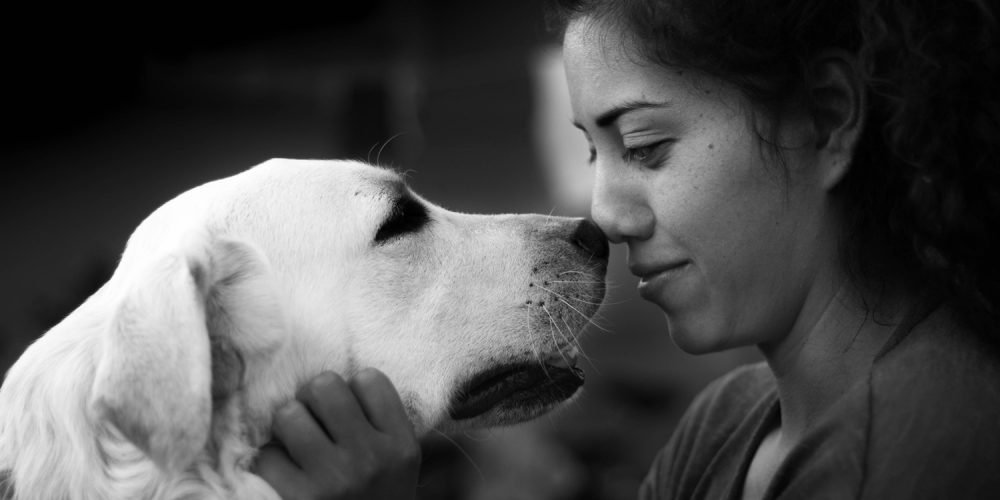
For victims of domestic violence (DV), the pandemic created an added level of danger. Studies showed that incidents of DV increased dramatically as COVID-related lockdowns were instituted around the world. The pandemic created a perfect storm for the often-silent epidemic of intimate partner violence. Isolation, stresses resulting from job loss, financial insecurity, housing and food insecurity, and lack of availability of resources to assist DV victims all contributed to an increased rise in DV activity.
Domestic violence victims who decide to leave abusive situations can face many difficult choices. But for DV victims with pets, these choices can be even more distressing if they don’t have options for their pets. Fifty percent of DV survivors say that they would not consider shelter for themselves if they could not take their pets.*
A Pathway to Safety
Fortunately, today in New York City there is a pathway for pet owners to seek safety with their animals. But it wasn’t always that way.
In 2006, the Mayor’s Alliance created Helping Pets and People in Crisis (HPPC), a pilot initiative exploring the reasons why so many pet owners were surrendering their animals because of domestic violence and other crises. At the Mayor’s Alliance, the early phase of the program helped to highlight the new concept of surrender prevention support and raise awareness of new ways animal welfare programs could collaborate effectively with human service agencies. By engaging with traditional social services, the program responded to more than 1,500 different cases and facilitated creative solutions aimed at keeping pets with their families as an alternative to animal relinquishment. Now based at Animal Haven, HPPC continues to aid the most marginalized pet owners experiencing crises.
Under the management of Jenny Coffey, a social worker with a decade of animal welfare experience, HPPC has developed strategies and best practices for keeping pets and their families together. She is quick to say there isn’t one solution for every situation and each case must be managed uniquely.
“Building partnerships with human service agencies is critical,” says Jenny. “These solutions take time, resources, community support, and a universal understanding that people love their pets and they will do anything for them. If human service providers fail to see their clients’ bond with their animals, they will miss an opportunity to help and potentially create an added barrier for families to access safety.”
One collaboration in particular is worth noting. In 2013, the Alliance began its most impactful partnership with Urban Resource Institute (URI), the largest provider of services for DV victims in New York City. Sharing essential support to URI in the form of crucial expertise and technical assistance, the Alliance helped URI create its People and Animals Living Safely (PALS) pilot program.
PALS was the first program for victims of domestic violence in New York City — and one of the few offered nationwide — that offers co-sheltering for families and their pets. The program allows families and their pets to shelter in the emergency facility, preserving the welfare and safety of all. Since its creation, the PALS program has assisted hundreds of pet owners, and today is offered in at least seven of URI’s shelters throughout New York City. The program serves as a model that can be extended to more shelters across the state and country and has awakened funders of both social service and animal welfare to their important role in creating new responses for these at-risk pet owners. Today, more funders, including Purina, PetSmart Charities, Red Rover, and others, have joined the crusade.
Challenges Remain
While tremendous progress has been made in the provision of services to DV victims with pets, challenges and gaps remain. For example, the PALS program has more units that accommodate families, leaving single pet-owners with fewer options. Also, the program limits emergency sheltering to six month, which presents challenges to many families when their time in the shelter is up. Moreover, New York City homeless shelters, which often are sought out by DV victims seeking safety, do not accept pets, leaving individuals and families with the heartbreaking choice of remaining in a dangerous situation or leaving their pets behind.
Update: On August 26, 2021, the New York City Council passed Intro 1483/1484, legislation that expands shelter access for New Yorkers experiencing homelessness with pets.
Fortunately, today in New York City, even in the wake of the pandemic, DV survivors have more resources available to them than ever before. If you or someone you know is living with domestic violence, help is available. For information, please visit http://www.animalalliancenyc.org/needhelp/domesticviolence.htm.
*According to the Urban Resource Institute website.


